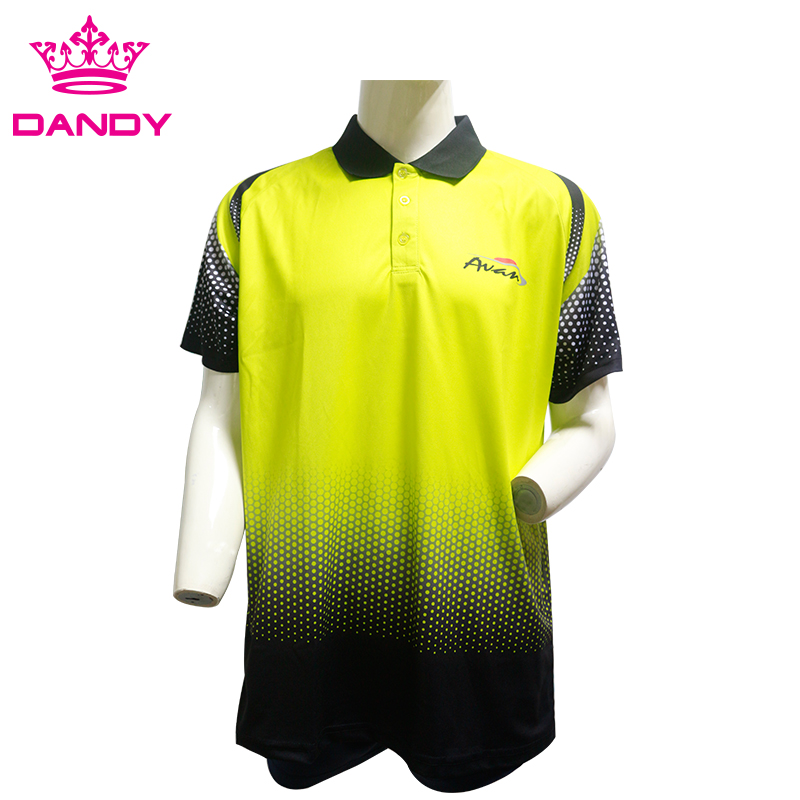First, the purpose and significance of waste rubber recycling and reuse
In the past 50 years, petrochemicals have sprung up and the three major synthetic materials such as synthetic resins, synthetic fibers, and synthetic rubber have developed rapidly.
Pollution problems
A large number of waste polymer products are scattered in the society, resulting in "white pollution" and "black pollution", which greatly pollute the environment, invade occupied land and damage human health.
In the past, waste tires were often treated with methods such as stacking, burying, and reclamation. Occupy the land, pollute the environment, breed mosquitoes, bacteria, damage the health of the residents, but also cause fire. The pollution caused by burning has left the surrounding grass untouched, and the ecological environment has caused great harm.
To achieve the third-step strategic goal of China’s per capita gross national product reaching the level of moderately developed countries in the middle of this century, one of the keys is to ensure
A virtuous circle of ecological environment.
The inevitable requirements of sustainable development
Since the United Nations established Agenda 21 in 1992, all countries in the world have taken actions to promote the implementation of sustainable development strategies. To achieve sustainable development has become the common goal of all countries in the world.
The Third Plenary Session of the 16th CPC Central Committee in 2003 put forward the scientific development concept of "people-oriented, comprehensive, coordinated, and sustainable development." This indicates that China's development strategy has undergone major adjustments and entered a new stage of development.
In order to achieve sustainable development, make full use of resources, and protect the environment, developed countries attach great importance to the recycling of waste rubber, and have earlier embarked on the legal track, and established a set of recycling management methods that meet the laws of the market economy.
A big rubber country
In 2004, it consumed 4.5 million tons of raw rubber, ranking first in the world
More than 230 million tires are produced
The scrapped tires are between 40 million and 60 million pieces, plus hoses, tapes, rubber shoes and other rubber products, and nearly 3 million t/year of waste rubber materials.
A country with a shortage of rubber resources
About 45% of the annual rubber consumption needs to be imported
Imported rubber about 2.4 million tons in 2004
There will be no fundamental change in a short period of time.
According to inaccurate statistics from various channels, the recycling rate of waste rubber in our country is about
65%, compared with Finland, the United States, Japan and other countries, a great difference.
Raw rubber consumption is large, but the recovery rate is low, so China's rubber industry is still in a serious situation of output-use-recovery imbalance.
From the perspective of the supply of petrochemical resources, the world’s oil resources are increasingly depleted
Proven reserves in the world: 151.1 billion tons
Remaining proved reserves: 137.4 billion tons
Oil resources according to current production levels can only be exploited: more than 40 years
The highest international oil price in 2005 has exceeded: US$ 70/barrel
China is a big oil-consuming country and has become a net oil importer during the Ninth Five-Year Plan period.
The development of synthetic rubber, which uses petroleum as its main raw material, and its main reinforcing material, carbon black, is bound to be greatly affected by the depletion of oil.
In today's relatively scarce energy, recycling of waste rubber is of great significance.
Research new methods for the use of waste rubber, use waste rubber to develop high value-added rubber substitutes, and provide key technical support for the creation of a resource-saving, environment-friendly and harmonious society.
In order to meet the needs of circular economy and social development, we must rely on scientific and technological progress, eliminate old technologies in a limited period, develop new technologies, and serialize and standardize an innovative technology platform for waste plastic recycling.
Second, waste rubber recovery, regeneration and application technology
Waste rubber recycling method
1, the original and the use of modification
2, direct combustion, heat recovery
3, the use of high-temperature pyrolysis technology, recovery of small molecular chemicals
4. Using physical and chemical regeneration technology, the insoluble and infusible cross-linked rubber is regained plasticity and becomes an elastomer material that can be reprocessed and utilized.
5, the manufacture of plastic powder as a substitute for polymers, used in rubber and plastics processing industry, construction industry, road traffic and so on.
A. The original use and renovation of tires
Suggest:
1. For tire products, increase the refurbishment rate, and then carry out other types of recycling and reuse for the retreaded tire products.
2. For non-tire products, refurbishment issues should also be considered, such as not being refurbished and not being renewed, other types of recycling and utilization;
3. In this way, you can make full use of rubber resources. However, we must develop downstream reuse technologies.
B. Direct combustion, heat recovery
The calorific value of waste tires is very high. A 1 kg heavy waste tire is equivalent to 11 kg of bituminous coal, but waste tire combustion does not completely release toxic gases and cause atmospheric pollution, and must be assigned to environmental protection measures. It is a low-value utilization method.
Incineration: It can solve the problem of possession of land, but it does not make full use of its value, it will also bring serious air pollution!
A number of cement plants, power plants, paper mills, and steel mills in countries in the United States, Japan, and Western Europe use discarded tires as fuel. According to statistics, the use of waste tires accounts for about 50% of the total number of waste tires. This kind of recycling method can not make waste rubber products play an effective role in the recycling of polymer materials, but in the end it only consumes valuable non-renewable resources.
China has not yet seen the report of industrialization. If it is necessary to establish related enterprises must have systematic environmental protection projects, the investment is not small.
C. High temperature pyrolysis, recovery of small molecule chemicals
Using pyrolysis technology, the waste rubber is cracked into small molecule chemicals such as fuel oil, carbon black, and a large number of steel wires can also be recovered.
Existing problems: Problems currently existing at home and abroad are that the cost of scrap rubber cracking equipment is high, and the separation and purification processes of cracked products such as heavy oil are difficult to control. At the same time, the quality of crude carbon black obtained is poor, and further processing and improvement are needed, so the current results Not obvious either.
China also has manufacturers (such as China's Lishui City Wanbao waste tire processing plant, Taipei Rongji Industrial Co., Ltd.) to implement, but the processing volume is not.
The development of roads and transportation has led to the development of the tire industry. High-speed, safe, and wear-resistant high-performance tires have become the mainstream of demand. According to statistics, in 2004 the world’s tire production reached 3 billion, and it is still growing at a rate of several hundred million each year.
D. Waste rubber production reclaimed rubber
The use of scrap rubber for the production of reclaimed rubber is a traditional waste plastic recycling method.
Recycled Rubber Status:
In 2004, the output of reclaimed rubber in China was 300,000 tons, which could create 1.2 billion in output value for the country each year. Reclaimed rubber has always been an important raw material for the rubber industry. In principle, the dissociation of network-like rubber macromolecules into linear macromolecules, which are used as rubber materials again, is an ideal method for recycling and has many advantages.
The methods currently used in China are mainly oil method and high-temperature dynamic desulfurization technology, but there is still some pollution.
Due to the plasticity of recycled rubber and its low cost,
Short-term still can not be completely replaced, the market demand is still relatively large.
Researching new types of non-polluting regenerative technology is the basic condition for reclaimed rubber to become a member of a circular economy society.
The traditional oil and water-oil laws currently have almost no production in developed countries. The current method used in China is mainly high-temperature dynamic desulfurization technology, but there is still some pollution.
Shear flow field reaction control technology:
Chemical substances reacted with sulfur cross-links are mixed with the rubber powder in normal temperature and high-speed shear fields, and the dynamic in-situ reaction causes the rubber powder to form a flowable reclaimed rubber.
☆ Use extracts such as orange peel, allicin, and durian shell, and control the regeneration of shear flow field reaction on the waste glue network.
☆Two Indian PhDs prepared Delink regenerant from plant extracts. They can perform targeted desulfurization regeneration of the waste plastic cross-linking network through shear flow field reaction control technology shear flow field reaction control technology and also received good results. .
Targeted desulfurization regeneration:
Microwave regeneration:
The microwave desulfurization method is a non-chemical, non-mechanical one-step desulfurization regeneration method. It uses microwave energy to break the S-S and S-C bonds in the powder.
Microwave field: f=2450 or 915 MHz. The rubber containing polar groups oscillates with the change of the electromagnetic wave under the action of high-strength, high-frequency electromagnetic fields. Due to the thermal dynamics of the molecules and the interactions between adjacent molecules, the polar groups and molecules There is tremendous energy between them. The weak bond in the powder breaks.
The microwave desulfurization method was first studied by Norety et al. in the United States, and it has been put into industrial application in the United States. The Japanese patent also has the introduction of microwave desulfurization technology.
The effect of microwave on the regeneration of white carbon reinforcing rubber is better than that of carbon black reinforcing rubber.
Effect of Microwave Heating on Properties of Vulcanizates
Effect of Microwave Heating on Properties of Vulcanizates
Ultrasound regeneration:
1. The University of Akron invented ultrasonic desulfurization in 1993. This method uses high-density energy fields to break the cross-links and retain the molecular backbone, so as to achieve the purpose of regeneration.
2. The ultrasonic field can generate high-frequency retractable stress in a variety of media, and high-amplitude oscillation waves can cause solid fragmentation and liquid cavitation. Acoustic cavitation causes the energy of the ultrasonic wave to be concentrated in the local position of the molecular bond, so that the lower energy density ultrasonic field is transformed into a high energy density at the point of breaking the cavity.
3. According to reports, Isayev A.Ier.a1. After being ultrasonically regenerated with GRT (waste tire rubber powder), the physical and mechanical properties of the vulcanizate were: tensile strength of about 9 MPa and elongation at break of 270%. This performance is higher than ordinary reclaimed rubber.
4. Isayev AI also mathematically described the ultrasonic desulfurization process and established a topological model. Ultrasonic desulfurization is the real regeneration of waste rubber, but this method has not yet removed the cost and technical barriers to commercial production, and commercial production will take some time.
Right angle head ultrasonic desulfurization device schematic
Coaxial head ultrasonic desulfurization device schematic
Electron beam regeneration:
Adjusting the energy of the electron beam selectively destroys the cross-links and preserves the molecular backbone, allowing the vulcanized rubber to be recycled.
Microbial regeneration:
Microbial regeneration is a new regeneration technology in recent years and is in line with the direction of sustainable social development.
Fliermans et al. used some thermophilic microorganisms to treat the vulcanized rubber powder at 65° C. to selectively break the chemical bonds of the vulcanizate and gradually remove the sulfur from the surface of the rubber powder particles to obtain a loose crosslinked network of colloidal particles. .
Lions et al. use sulphur bacteria to separate elemental sulphur and sulphuric acid from waste rubber and can obtain both reclaimed rubber and sulphur in a simple manner.
Straube puts the waste rubber powder into a solution containing thiobacillus in the air to perform a biochemical reaction. Sulfur-bearing bacteria break the sulfur bonds at a thickness of several μm on the surface of the rubber particles to exhibit reclaimed rubber properties. At this point, sulfur is liberated from the surface or reacted to generate sulfuric acid.
Romine et al. placed scrap rubber powders on enzymes containing desulfurization bacteria or enzymes produced by the bacteria. Bacteria or enzymes convert S in S-S, S-C in the vulcanizate into sulphoxide or sulphone.
Bredbreg et al. used thiobacillus ferrooxidans to treat the surface of frozen and crushed tire rubber powder.
Arenskotter et al. believe that several commonly used microorganisms that degrade rubber are actinomycetes, mycobacteria, and soil fungi.
In recent years, under the support of the National Fund and the 863 Program, our research group is studying the methods of cultivating and desulphurizing the microbial regenerative bacterial agents, and has obtained some significant results.
New microbial agents and Thiobacillus ferrooxidans were developed.
The process and effect of microbiological inoculants and Thiobacillus ferrooxidans on desulfurization of colloidal powders were studied, and valuable basic data were obtained.
Cultured bacteria:
E. Crumb rubber powder preparation
The preparation of waste rubber into rubber powder is a new recycling method in recent years. The waste rubber powder is prepared by freezing or mechanical shearing and then used as a substitute for a polymer material.
Scrap rubber crushed at room temperature:
Using a breaker, an open mill, and a disc mill, the scrap rubber can be crushed to a fineness of about 40 to 60 mesh. The price is cheaper.
Scrap rubber freezing and smashing:
First, liquid nitrogen freezes and pulverizes the waste rubber, which can be crushed to a fineness of 200 mesh or more. Recycle steel cords. 0.5 liters of liquid nitrogen/kg of rubber powder.
Second, the turbine freeze-pulverized waste rubber can be crushed to a fineness of 80-100 mesh or more. Recycle steel cords. Higher power consumption.
During the "8th Five-Year Plan" period, the Ministry of Science and Technology initiated a joint project on the scrapping technology and surface activation technology.
Through the efforts of a number of domestic research institutes, we have designed normal temperature mechanical grinders and turbo-cooling grinders, and established a number of plastic powder and activated rubber powder production lines with an annual production capacity of nearly 10,000 tons.
At present, the production enterprises of rubber powder are blooming everywhere and form a large-scale production.
Colored plastic powder:
The production and application of rubber powder is one of the most promising ways to recycle and reuse waste rubber.
The production and application of rubber powder in foreign countries is known as the "Chaoyang" industry. It is the second revolution in the comprehensive utilization of waste rubber and brings new vitality and vitality to the comprehensive utilization of waste rubber.
Application 1: Waste rubber powder modified asphalt as road paving materials Beijing Municipal Bureau of Highways, March 2007 Design Guidelines for Rubber Powder Asphalt and Mixtures Starting this year, rubber powder modified asphalt will be promoted in road overhaul in this city.
On a 3-inch deep, two-lane highway, 16,000 scrap tires can be used per mile.
Europe and the United States have used waste rubber powder modified asphalt technology for more than 20 years.
In the United States, 11,000 kilometers of highways have been paved with rubber-modified asphalt.
The United States states in ISTEA (Interstate Road Transport Efficiency Act) page 1038(d) that states should use recycled waste tires in the construction of asphalt roads.
Waste rubber powdered waste/asphalt High grade highway material properties:
Rubber powder modified asphalt can significantly improve the high and low temperature performance of asphalt (70 °C does not flow, -35 °C does not embrittlement), increase the friction coefficient of asphalt pavement, weaken the light reflection, safety, comfortable driving, and extend the use of road life. In particular, the noise reduction effect is significant, which is equivalent to a reduction of 30% in traffic flow.
Every year, China adds 50,000 kilometers of expressways, and it needs to lay 8 million tons of asphalt each year. 8 million tons of asphalt is laid. If 10 to 15% of the rubber powder is used to modify the asphalt, the annual demand for rubber powder is 800,000 to 1.2 million tons, which can create a production value of 40 billion yuan.
Preparation and industrialization of rubber powder/asphalt highway materials:
The main problems of rubber powder modified asphalt:
First, the waste rubber powder is added to the asphalt where the waste rubber powder is added at 160-165°C. When it is modified, the viscosity of the system suddenly increases and the fluidity deteriorates, making it difficult to perform the stirring operation and raising the stirring temperature. Reduce the viscosity of the system, but the rubber powder and bitumen have a certain degree of aging, which seriously affects the quality of the modified asphalt;
Second, the interface of rubber powder/asphalt is not well bonded, and the phase stability is poor. When the modified asphalt is evenly mixed and has not yet been mixed with the pavement stone, the modified asphalt produces precipitation and segregation, making the construction quality difficult to control. .
Beijing University of Chemical Technology combined with Beijing Road New Modified Asphalt Co., Ltd. and Beijing Highway Research and Design Institute to create a “low temperature and high shear in-situ modification method†to prepare high-performance rubber powder modified asphalt.
The study is underway and is expected to make an important contribution to our country's rubber powder modified asphalt business.
Application 2 Preparation of activated rubber powder as a substitute for rubber
The United States, Japan, Russia and other countries use rubber powder to produce all kinds of rubber products, such as shoe soles, rubber sheets, waterproof building materials, conveyor belts, sound-absorbing panels, etc., and are also heavily used in tire treads to significantly improve the performance of tread rubber. It also reduces costs.
China's waste rubber powder industry progress:
Inspired by developed countries, during the “8th Five-Year Plan†period, the Ministry of Science and Technology initiated a project to jointly tackle the problem of scrap rubber smashing technology and surface activation technology.
Through the efforts of several domestic scientific research institutes, a normal-temperature mechanical crusher has been designed, and an activated rubber powder production line with an annual production capacity of nearly 10,000 tons has been established.
The use of 15 to 20% of activated rubber powder in car and truck tire treads has received significant social and economic benefits.
After the "Eighth Five-Year Plan" attack, the manufacturers of rubber powder bloomed everywhere and formed a certain scale.
Application 3 Blending plastic powder with plastics to prepare thermoplastic elastomer materials Produce high value-added seepage irrigation pipes, seals, damping plates, and waterproof membranes.
Preparation technology and industrialization of waste rubber powder thermoplastic elastomer
Beijing University of Chemical Technology cooperated with Beijing Oriental Yuhong Waterproof Material Co., Ltd. to develop a new generation of WRP/WRP/resin resin TPV low cost waterproofing membrane.
Application 4 "High-temperature and high-pressure sintering forming high-temperature and high-pressure sintering forming" Preparation of tough rubber products Application 5 Preparation of rubber flooring products
Outlook The use of targeted desulfurization technology for the production of reclaimed rubber, waste rubber to prepare rubber powder and activated rubber powder, cracking and recovery of small molecule oils and carbon black, etc., is the main approach and method for environmentally friendly waste rubber recycling. The virtuous recycling of a large number of waste tires will surely make our social environment better.
Guangzhou Dandy sporting goods Ltd which is located in Guangzhou city, China, is a professional manufacturer specializing in producing and creating sportswear based on clients` requirement. We have our own factory and office. It occupied more than 500 square metres and have more than 150 employees. We mainly handle export of garments from Cheer Uniforms, leotards, Soccer Kits, rugby kits, basketball kits, tracksuit and other practice wears for more than five years with high quality but competitive price. With importing machines, ink, crystals, etc. , we did specialize in sublimated sportswear and all stars dance wears. Moreover, we provide OEM/ODM service for each clients with custom design, color, size fabric, etc. With rapid respond, cost effective and high quality jerseys and professional recommendation on apparels we have a strong customer base. With the solid production, rich experience and advanced manufacturing process, we had previously cooperated with many brands and clients from all over the world.
T shirts/Polo Shirts/ singlets: It's made from polyester,spandex and cotton. The prices depend on the quantity and fabric to need





Polo Shirts
White Polo Shirt Mens,Polo Shirts,Mens Polo Shirts,Custom Polo-Shirt
Guangzhou Dandy Sporting Goods Ltd , https://www.dandysportswear.com